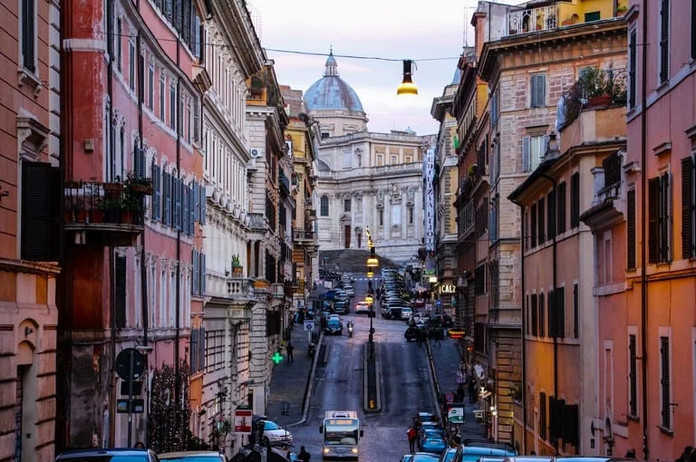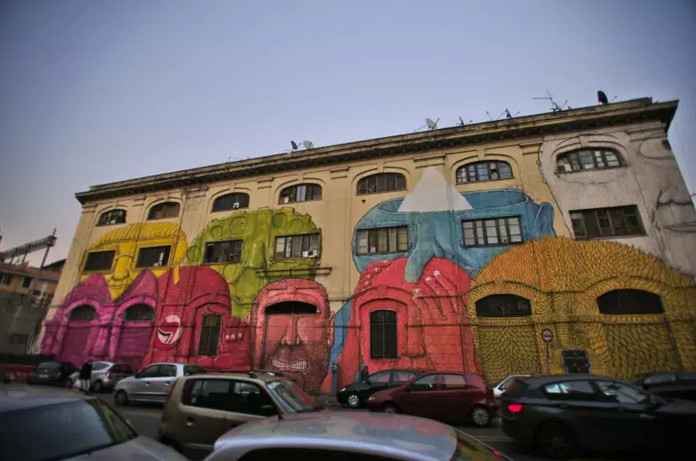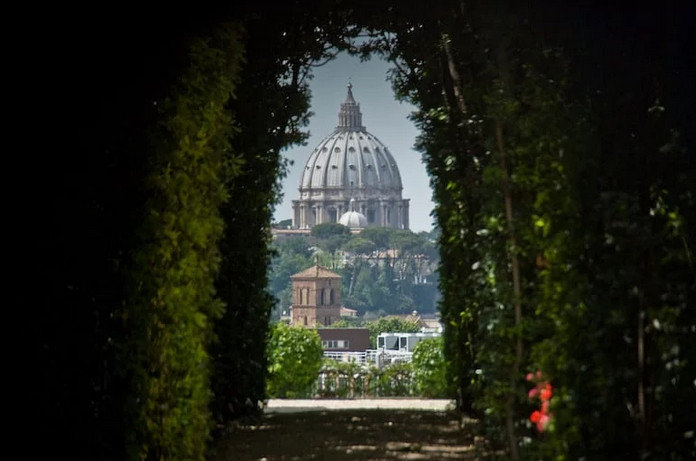The Centro Storico
 Every city has its historic center, but none can compare to Rome’s. Walking through the beloved Centro Storico is unlike any other stroll.You’re walking distance from some of the most important sites in Rome, including the Pantheon, the Trevi Fountain, and the Spanish Steps.
Every city has its historic center, but none can compare to Rome’s. Walking through the beloved Centro Storico is unlike any other stroll.You’re walking distance from some of the most important sites in Rome, including the Pantheon, the Trevi Fountain, and the Spanish Steps.
Campo de’ Fiori
 Important churches accompany most of the piazzas in Rome. Piazza Campo de’ Fiori, however, stands out as a churchless piazza, historically based around trade and commerce instead. Its lack of a religious structure is reinforced by the looming statue of Giordano Bruno at its center.
Important churches accompany most of the piazzas in Rome. Piazza Campo de’ Fiori, however, stands out as a churchless piazza, historically based around trade and commerce instead. Its lack of a religious structure is reinforced by the looming statue of Giordano Bruno at its center.
Trastevere
 Often lauded as one of the best neighborhoods in Rome, Trastevere has continued to attract both tourists and locals alike. From above, its myriad of cobbled streets and intricate piazzas form a detailed map of stories, like the lines formed on a grandmother’s hands.
Often lauded as one of the best neighborhoods in Rome, Trastevere has continued to attract both tourists and locals alike. From above, its myriad of cobbled streets and intricate piazzas form a detailed map of stories, like the lines formed on a grandmother’s hands.
Rione Monti
 Rome’s first ward, the neighborhood for the cool and young, the old and vintage. For those who want a serving of cobblestones, antiques, and artisans, with a side order of beauty, great food, and the best bars in Rome.
Rome’s first ward, the neighborhood for the cool and young, the old and vintage. For those who want a serving of cobblestones, antiques, and artisans, with a side order of beauty, great food, and the best bars in Rome.
Prati
 Known for its wide, sweeping avenues, elegant buildings, and modern European charm, Prati has a distinct personality and a style reminiscent more of a quartier in Paris than a former marshland in Rome.
Known for its wide, sweeping avenues, elegant buildings, and modern European charm, Prati has a distinct personality and a style reminiscent more of a quartier in Paris than a former marshland in Rome.
Borgo
 Borgo is Rome’s 14th neighborhood. The area’s cobblestone streets are laden with history and have been home to Pope Benedict XVI, world-famous artist Raphael, & the great Michelangelo Buonarroti.
Borgo is Rome’s 14th neighborhood. The area’s cobblestone streets are laden with history and have been home to Pope Benedict XVI, world-famous artist Raphael, & the great Michelangelo Buonarroti.
Monteverde
 Monteverde is an escape, a retreat, a place to recharge while hiding from the noise and hustle of the city below; its shaded streets and a slower pace in exchange for a sweaty walk up the Gianicolo hill. A fifteen-minute tram ride from Piazza Venezia, Monteverde begins where Trastevere ends and stretches West across the city, past Villa Doria Pamphili.
Monteverde is an escape, a retreat, a place to recharge while hiding from the noise and hustle of the city below; its shaded streets and a slower pace in exchange for a sweaty walk up the Gianicolo hill. A fifteen-minute tram ride from Piazza Venezia, Monteverde begins where Trastevere ends and stretches West across the city, past Villa Doria Pamphili.
Testaccio
 Testaccio may not be Rome’s prettiest neighborhood, but its rich history more than makes up for it. In antiquity, the district was home to the Emporium port, where the bulk of the Romans’ food supply funneled into the city. Olive oil, grains, and other essential foodstuffs arrived in terracotta vessels called amphorae, and once emptied were disposed of in an outdoor dumpsite.
Testaccio may not be Rome’s prettiest neighborhood, but its rich history more than makes up for it. In antiquity, the district was home to the Emporium port, where the bulk of the Romans’ food supply funneled into the city. Olive oil, grains, and other essential foodstuffs arrived in terracotta vessels called amphorae, and once emptied were disposed of in an outdoor dumpsite.
Ostience
 Vibrant, colorful, and eclectic, the once up-and-coming Ostiense district is now in full bloom. Crossed by the historical Via Ostiense (built-in Roman times to link the capital with the strategic harbor of Ostia). Ostiense borders the popular working-class areas of Garbatella and Testaccio, two authentic strongholds of A.S. Roma fans.
Vibrant, colorful, and eclectic, the once up-and-coming Ostiense district is now in full bloom. Crossed by the historical Via Ostiense (built-in Roman times to link the capital with the strategic harbor of Ostia). Ostiense borders the popular working-class areas of Garbatella and Testaccio, two authentic strongholds of A.S. Roma fans.
Aventine
 Located on the southernmost of Rome’s seven hills, the Aventine offers an escape from the commotion of the city center whilst still hosting an array of historical sites and presenting a wealth of wining and dining opportunities. Hailing from an ancient statue of a ‘Sacred Mount’, the Aventine hill has seen the construction of some of the earliest Christian churches and today is a popular and elegant residential area, bursting with stylish villas and sophisticated gardens.
Located on the southernmost of Rome’s seven hills, the Aventine offers an escape from the commotion of the city center whilst still hosting an array of historical sites and presenting a wealth of wining and dining opportunities. Hailing from an ancient statue of a ‘Sacred Mount’, the Aventine hill has seen the construction of some of the earliest Christian churches and today is a popular and elegant residential area, bursting with stylish villas and sophisticated gardens.















